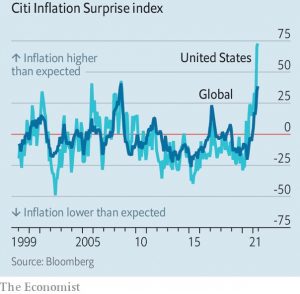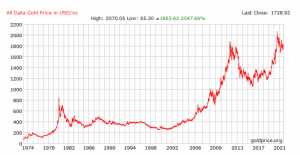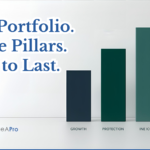The post-Covid global recovery brings opportunities – and problems – as economies normalise. The notable issues right now are shortages and inflation: prices of everyday items such as food, fuel, timber and energy have accelerated upwards. This has reflected in official inflation data which is recording multi-year highs in the UK and around the world.
For markets and central banks, that make interest rate decisions, the important indicator is unexpected inflation which has scope to feed off itself. The extent of this unexpected inflation is shown in the latest Citi Inflation Surprise Index, as shown below.
Remember, i have previously written about inflation which – in reality – is much higher than the official numbers suggest. Now, with the current acceleration in inflation, it’s even more important to put your cash to work and avoid erosion of its value. Read that short article here.
Investing in Inflation Beneficiaries
With that in mind, I analysed various asset classes to evaluate their performance during historical inflationary periods. If inflation remains stubbornly high and fails to normalise back to pre-Covid levels, certain asset classes could be beneficiaries, based on their historical patterns.
An important caveat: If inflation threatens to spiral out of control towards double-digit levels, all bets are off. In that negative scenario no asset class would be spared – that includes leveraged assets such as property and equities, as well as “safe” fixed-income securities such as government bonds. Thankfully, this scenario is not my base-case expectation.
In a moderately high and sticky inflationary environment the following asset classes could do well: Global Equities (overall), Value Equities, Momentum Equities, Property, Infrastructure Assets, Commodities – but not Gold …
Global Equities
Why? Equities, overall, have been a great hedge for low or moderate inflation. With inflation, most companies increase their profits due to “operational leverage”. Using a simple example, let’s say a company has £100 in revenues and £80 in costs. That results in profits of £20. Now, let’s assume 5% inflation across the board. As a result revenues go up to £105 and costs go up to £84, resulting in a profit of £21. That’s a 5% increase in the company’s profits due to operational leverage. Actually it works better because many company costs are generally fixed in the short-medium term – eg rents, staff, leases, contracts etc. So in reality, companies can experience an inflation-beating rise in profits.
All else being equal, as profits increase, share prices also rise. Hence, equities tend to be a great hedge for inflation. How to take advantage of this? There are many globally diversified equity ETFs out there. Vanguard, iShares and SPDR are effective providers of global equity ETFs.
Value vs Growth equities
There are also different variations of global equities – called “equity factors”. The main factors being: Value, Growth, Momentum, Quality, Yield and Size. You can buy an ETF for each and any of these factors. As per the study in the chart below, the best performing factors during inflationary periods have been Value and Momentum.
Why do Value equities perform better? This relates to rising interest rates during an inflationary phase. Rising rates are less favourable for Growth companies (eg Tech stocks) so they fall out of favour. As this happens, investors rotate from Growth into Value shares. Further details to explain this is contained in the notes on DCF valuation at the bottom of this article. How to take advantage? There are a number of Value-focused ETFs available. iShares is a good place to start.
Momentum Equities
Momentum describes any pattern that keeps building on itself. Momentum equities simply keep going up over a period of time. Momentum is not specifically connected with an inflationary period but because the latter tended to last for a period of time, that provided an environment for momentum-oriented stocks to keep moving in the same direction. How to take advantage? Again, there are a number of Momentum-focused ETFs out there. iShares is one provider of Momentum ETFs.
Property
Property is a leveraged asset class meaning it is sensitive to interest rates. Currently, central banks appear willing to let inflation run in the hope it is only reflecting transitory post-Covid adjustments. If central banks are correct, moderate inflation will not lead to significant interest rate hikes. That combination of low rates and moderate inflation (translating into moderate wage rises) is supportive for residential property – and indeed, other sectors such as commercial and industrial.
How to take advantage? Apart from buying property in the usual way, we can invest in REITs (Real Estate Investment Trusts) which are essentially property funds. There are REITs available in various different property sectors including Residential, Storage, Office, Retail, Industrial etc. Larger and more liquid REITs are the best place to start for new investors. A good place to look for available REITs is this handy website
Infrastructure Assets
These are assets such as toll roads, bridges, transportation, utilities, telecoms networks, wind farms etc. Usually, the owners/operators of these assets has a government-mandated contract to pass inflation onto end-users. Hence, the profits and values of these assets are inflation-proofed.
How to take advantage? You or I are unlikely to go out and buy a bridge or a wind farm but, luckily, there are Infrastructure ETFs available to us. iShares and SPDR are two good providers of such ETFs.
Commodities
Commodities have historically enjoyed a strong correlation with inflation, making them a useful inflation hedge. “Commodities” is a broad diversified umbrella that covers oil, energy, metals and agriculture.
How to take advantage? Again, you wouldn’t pop out and buy a barrel of oil but there are diversified commodity ETFs available from providers such as iShares, L&G and Invesco.
What about Gold?
Gold as an inflation hedge is somewhat of a myth. Gold has failed to perform this role on many occasions. 2021 is a good recent example with official inflation data posting multi-year highs. Yet, gold is loss-making in 2021. I remain sceptical about gold because of its lack of cashflow. Because of that, and unlike equities which have to keep up with profits and dividend growth, gold can “afford” not to make positive returns for long periods of time.
Indeed, between 1982 and 2002, gold did nothing for 20 years (see chart below). Worse, adjusting for inflation, that equates to a significant loss in real terms. Without cashflow, gold can conceivably do the same again – or it can rocket up! It’s always difficult to call gold because it relies on numerous factors including the US dollar, liquidity and Asian demand.
Crypto
Perhaps the new digital gold? … Your guess is as good as mine!
For more of this …
If you like the idea of setting up a diversified, set-and-forget compounding portfolio using a simple 3-step process, learn more here and see how others did it.
Notes on DCF and the impact of interest rates on growth equities
The following expands on the commentary above around growth v value equities …
When inflation is moving higher, there is pressure for rising interest rates to combat it. Growth equities (eg technology shares) have a higher percentage of their valuation weighted later in their life. Value equities (eg banks, energy, commodity companies) have a relatively larger amount of their valuation towards the earlier part of their life. When interest rates go up, that disproportionately affects the present day valuation of growth companies as the discounting process in a discounted cashflow (DCF) penalises higher growth companies more when rates are rising. When this happens, you often see a rotation of money from growth towards value shares.
For those wishing to learn more about this, visit Discounted Cash Flow (DCF) Definition (investopedia.com)










